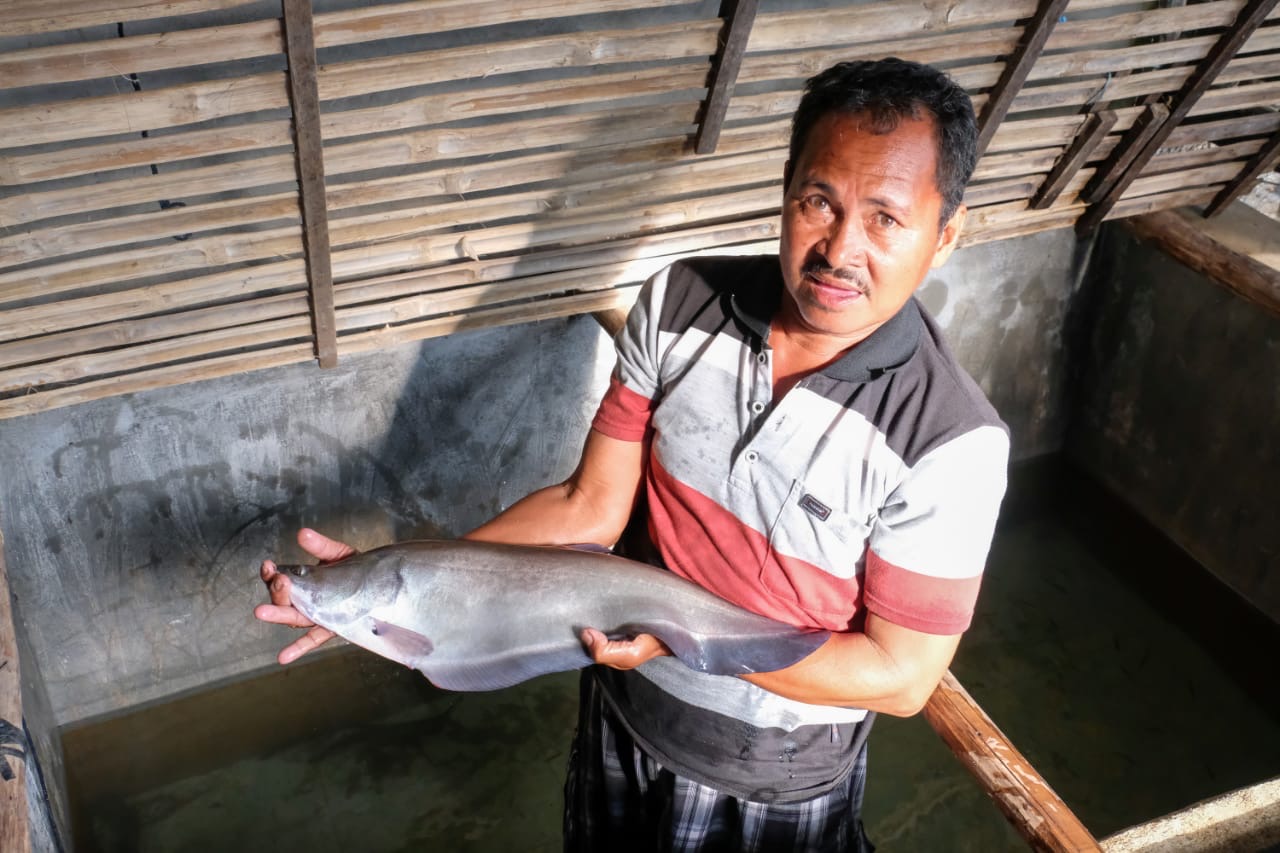
"Go Collaboration" Pertamina Plaju Refinery and Palembang BRPPUPP, Save Belida Fish in OKI from Trade Through Belida Musi Lestari Program
Palembang, December 25, 2021 – When you hear Belida's name, you will immediately think of a fish and an icon of South Sumatera. The habitat of this fish that lives in the waters of Sumatera with the popular name Belida Musi is now threatened. Regulation of the Minister of Maritime Affairs and Fisheries (Permen. KKP) Number 1 of 2021 regarding protected fish species is being tightened, thus making Belida fish no longer allowed to be caught, traded, and consumed in order to save its existence.
PT Kilang Pertamina Internasional (PT KPI) Refinery Unit (RU) III since 2018 has been present with its Corporate Social Responsibility (CSR) through a program called Belida Musi Lestari. The program which was initially intended to cultivate Belida Fish by involving the fostered community that raise Belida Fish, is now designed with the concept of collaboration with government-owned agencies that are concerned with the cultivation of biodiversity, namely the Public Water Fisheries Research Agency and Fisheries Extension (BRPPUPP) Palembang in supporting the conservation program.
This collaboration between PT KPI RU III Plaju and BRPPUPP in saving biodiversity was the first to be carried out, so that in September 2021 it won the MURI Record as the First Stakeholder Collaboration for the Belida Fish Germplasm Rescue. This collaboration is still ongoing, the Belida fish that are cultivated in the BRPPUPP installation pond in Mariana Village, Banyuasin I District, Banyuasin Regency, have succeeded in giving birth to the second generation (F1).
Recently, PT KPI RU III Plaju and BRPPUPP Palembang yesterday (23/12) went to the upstream of the Musi creek, namely the Komering River to save Belida fish from being traded. The group of PT KPI RU III Plaju and BRPPUPP accompanied by a fishery instructor from Pedamaran District visited a group of fishermen in the Komering River Hulu to directly check the alleged activity of buying and selling belida fish which is still being used as raw material for making kemplang, while its cultivation is still very minimal. The three main activities in conservation are rescue, cultivation, and research. The rescue activity this time managed to save around 70 Notopterus and 3 Chitala Lopis, weighing 3 - 4.5 kg.
Area Manager of Communication, Relations & CSR of PT KPI RU III Plaju, Siti Rachmi Indahsari said that her party was still consistent with efforts to conserve Belida Fish through the Belida Musi Lestari program. "Our efforts to preserve Belida Fish as an icon of the Musi River and South Sumatera are still ongoing by cultivating brooders in collaboration with BRPPUPP Palembang. Yesterday, our team directly save Belida fish from being traded," said Rachmi.
Rachmi added that this conservation program shows the efforts of PT KPI RU III Plaju in supporting the realization of the fifteenth goal as stated in the Sustainable Development Goals (SDGs), which is to stop the loss of biodiversity. "More specifically, we focus on target 15.5, which is to take rapid and significant action to reduce the degradation of natural habitats, stop biodiversity, protect, and prevent the disappearance of endangered species," continued Rachmi.
The Belida Fish rescue program also received an award from the Regional Research and Development Agency (Balitbangda) of the South Sumatera Province. The peak of the awarding ceremony for 17 categories of innovators was held on Monday (20/12) at Griya Agung. In that event, a researcher of BRPPUPP Palembang, Ike Trismawanti received the "Best Winner II" category of Innovative Researcher which was handed over directly by the Governor of South Sumatera H. Herman Deru. With this award, it is hoped that it can be a motivation to continue to take part in efforts to conserve South Sumatera belida fish in the future.
Ike said that in addition to rescue, the visit yesterday was also an effort of checking (biodiversity research) the distribution of Belida fish species in the South Sumatera region, especially the Musi River and creeks such as the Komering River in the OKI district.**